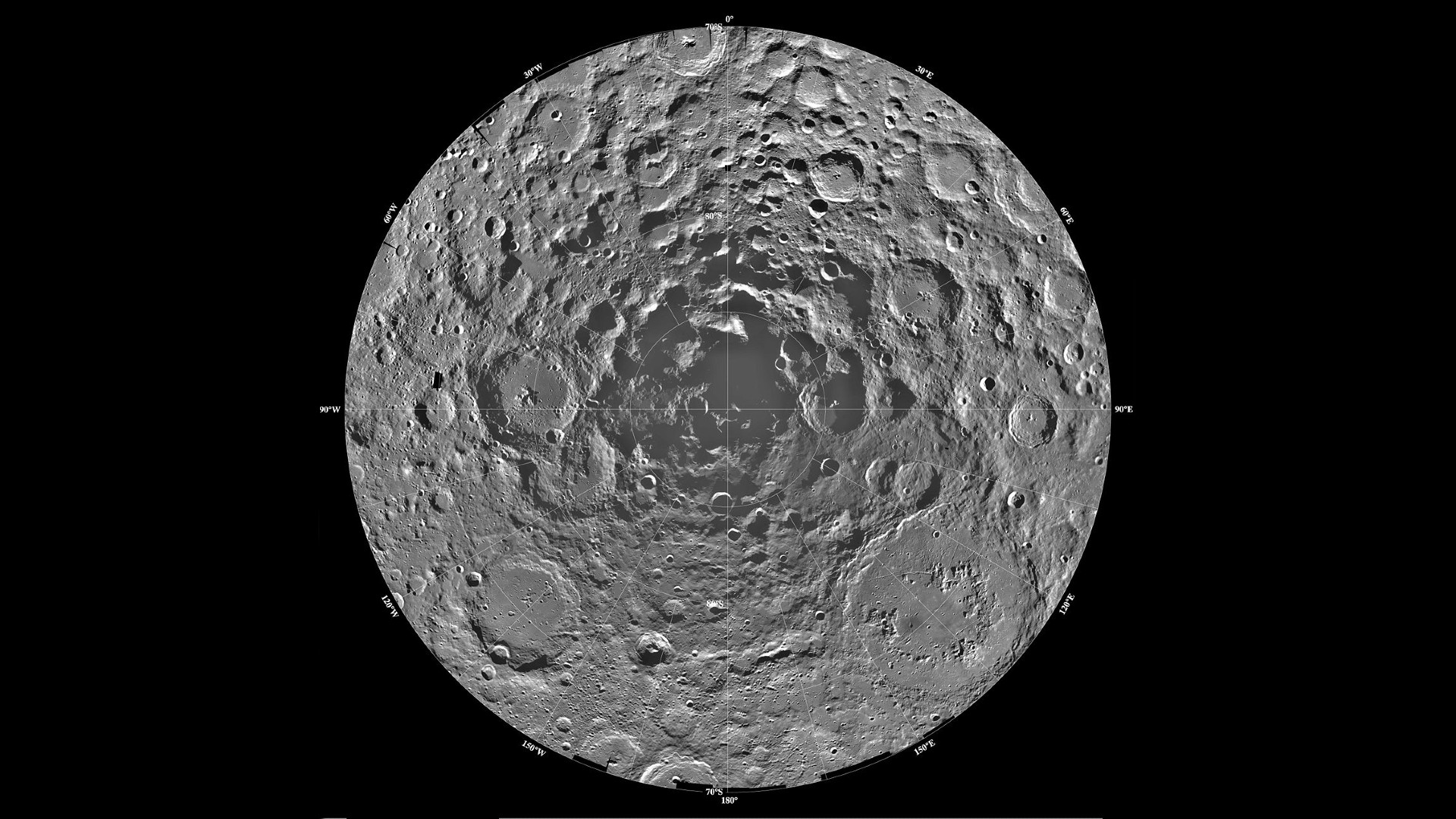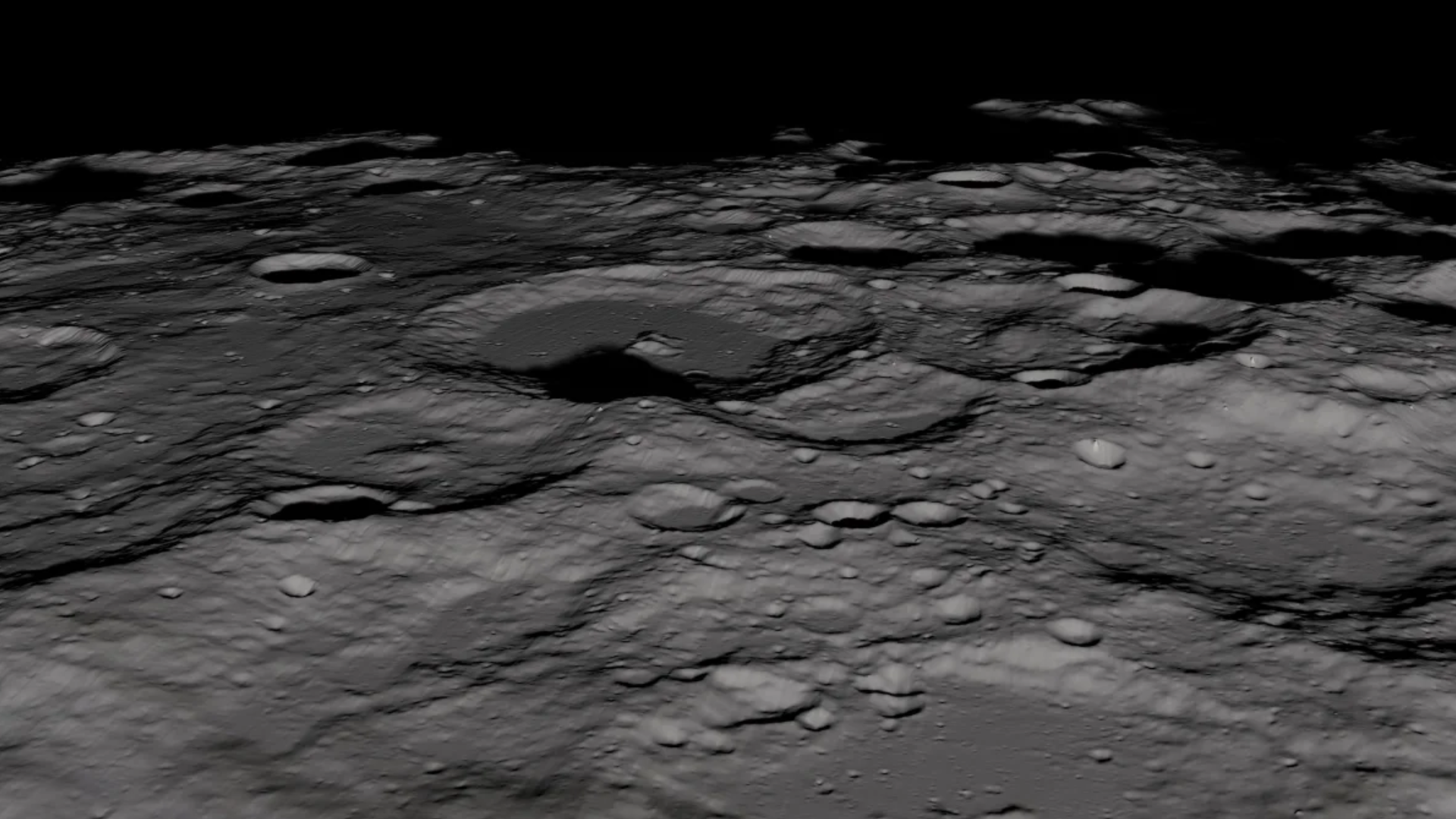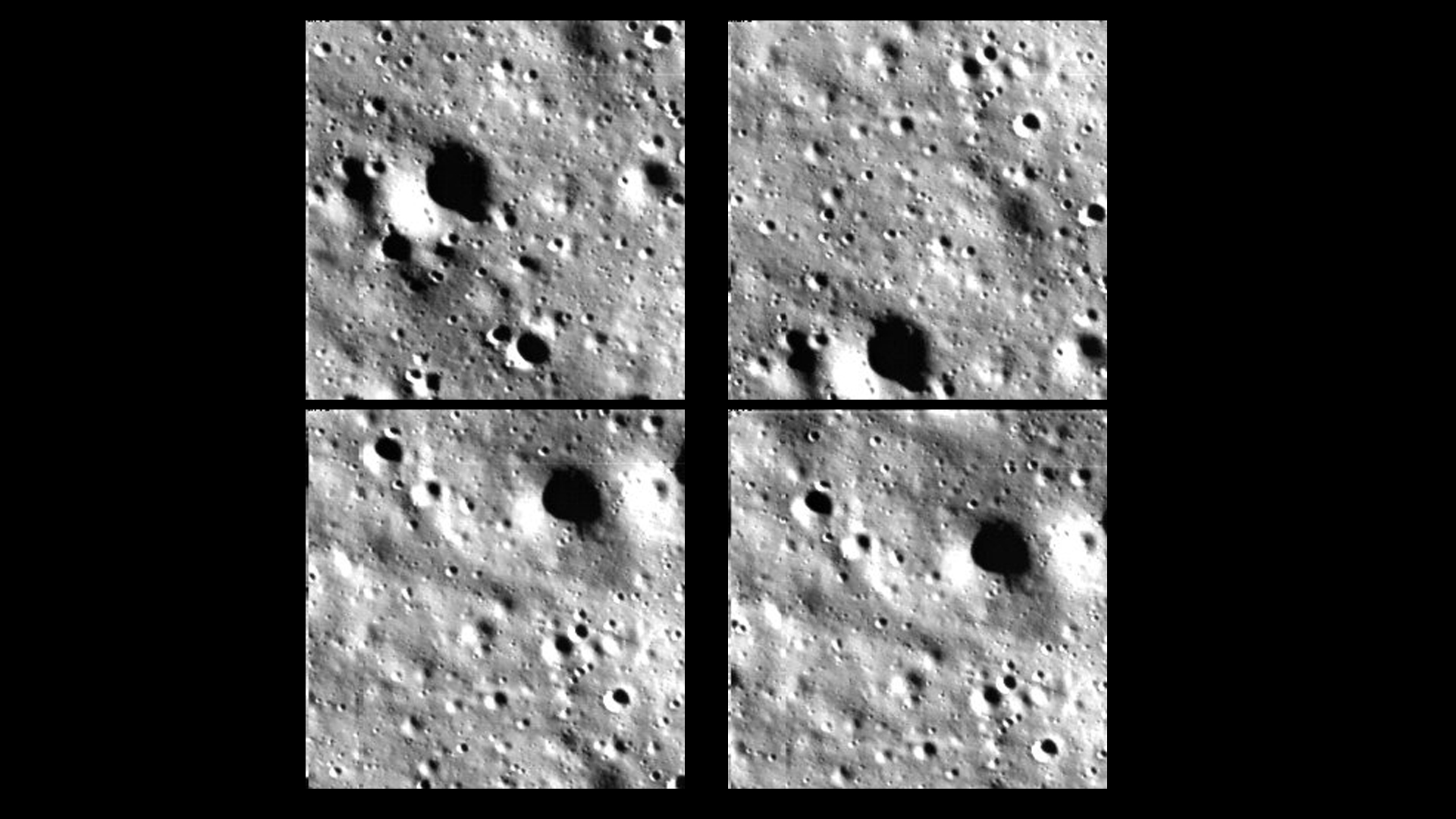Why Chandrayaan-3 landed near the moon's south pole — and why everyone else wants to get there too
The lunar south pole is attracting intense attention from space agencies. Even NASA plans to land Artemis 3 astronauts there.

India's Chandrayaan-3 mission successfully landed near the moon's south pole on Wednesday (Aug. 23). The Indian Space Research Organization (IRSO) mission not only made history because it saw the nation become the fourth to successfully land on the moon — after the Soviet Union, the U.S. and China — but also because it named India the first to land at the southern lunar pole.
The lander's arrival was marked on the ISRO Twitter account with words from Chandrayaan-3 on the lunar surface: "I reached my destination, and you too!'
But IRSO's mission, which has since deployed a robotic rover to begin exploring the lunar south pole, isn't exactly alone in its goals.
Around 2025, as part of its Artemis 3 mission, NASA plans to have humans step foot on the moon for the first time in 50 years. That journey is also set to include the first woman and person of color to make the trip. But even before that, the U.S. space agency's Volatiles Investigating Polar Exploration Rover (VIPER) is expected to explore the southern pole in 2024 during a 100-day-long mission.
And China, with its burgeoning space industry, isn't going to be left out of this lunar south pole action. The country's space agency plans to send the Chang'e 7 mission there in 2026 along with a new moon rover.
So why is all this interest in the lunar south pole heating up? Well, ironically, it's primarily due to something very cool.
Related: See 1st photos of the moon's south pole by India's Chandrayaan-3 lunar lander
Breaking space news, the latest updates on rocket launches, skywatching events and more!
The lunar south pole's most precious commodity
Interest in the lunar south pole as a landing site is mainly driven by the fact that scientists know the region hosts water in the form of ice. Water is, of course, essential for life as we know it — but it also has other uses. For instance, it can act as a coolant for equipment and even provide rocket fuel. The latter could be especially useful for a staging mission to Mars launched from the moon someday.
What this means is, as space agencies start thinking about sustainability in space as well as the next era of crewed space missions, the ability to harvest water in-situ on the moon for drinking, cooling machinery, or even breaking down into hydrogen and oxygen to provide breathable air or fuel is of immense value.
Additionally, water on the moon is of pure scientific value. It can be used as a record of geological activity on the moon, such as lunar volcanoes, and even act as an asteroid strike tracker.
While water has been detected across the surface of the moon, the majority of water ice signals come from the poles.
At the lunar south pole, only elevated peaks are lit by the sun. This is because the sun is always positioned around the horizon due to the moon's tilt. More low-lying areas are permanently shrouded in shadow, and are quite literally referred to as permanently shadowed regions (PSRs).
Temperatures in PSRs can drop to as low as -418 degrees Fahrenheit (-250 degrees Celsius), which is so frigid its colder than Pluto — but this means it's also an ideal spot to maintain water ice.
Any water molecules that enter a PSR region are immediately frozen. They're also trapped because it is simply too cold for them to evaporate. This water content then falls to the surface, where it gets mixed with lunar soil. That process results in the growth of large "pockets" of water and soil at the moon's south pole.
ISRO was integral in first detecting such lunar water to begin with when, in 2008, its Chandrayaan-1 spacecraft carried a NASA-provided science instrument called the Moon Mineralogical Mapper (M3) to lunar orbit. This determined the existence of water ice inside craters at the moon's south pole.
The following year, in 2009, NASA's Lunar Reconnaissance Orbiter (LRO) purposefully slammed a dark crater at the lunar south pole with the Lunar Crater Observation and Sensing Satellite (LCROSS). This created a plume of debris that LCROSS jetted through, enabling it to detect water ice that had been hidden in darkness.
There was a small concern, however, that the molecule hydroxyl (OH) was confused to be the water molecule (H2O). This fear was allayed in 2020 when it was revealed that data from NASA's Stratospheric Observatory For Infrared Astronomy (SOFIA) telescope confirmed the first unambiguous detection of water at the lunar south pole.
Based upon SOFIA data, scientists estimated there could be as much as 12 ounces of water for every one cubic meter (just over 35 cubic feet) of lunar soil at the southern pole of the moon.
According to the Planetary Society, when considering Chandrayaan-1 and LRO data, the two lunar poles harbor over 600 million tons of water ice. That's enough to fill around 240,000 Olympic-sized swimming pools.
And this, experts say, is a low-end estimate.
Thus, with such an incredibly valuable resource located around the lunar south pole, it is a wonder space agencies haven't already swarmed to get some space probes there well before ISRO's Chandrayaan-3 mission soft-landed this week.
As it turns out, there is a very good reason for this.
Why haven't we landed at the lunar pole before?
Landing near the lunar south pole is not easy, and part of the reason for this is tied to what makes landing there so desirable in the first place. The shadowy nature of the lunar south pole that helps preserve water ice means a soft landing there is tricky.
Most lunar descent vehicles rely on cameras to guide their final approach to the lunar surface, ensuring to avoid obstacles and hazards such as boulders or craters.
Landing is risky even on well-lit regions of the moon. Just one chance encounter between a boulder big enough to tip a spacecraft and a lander would end in disaster for the mission.
Therefore, the risk increases substantially in the shadowy lunar south pole.
Such risk is also magnified by the fact that the lunar south pole lacks large expanses of flat terrain as are found at the moon's equator, for instance. Terrain at both lunar poles is known to be heavily cratered as well as more likely to be sloped and rocky.
Moreover, the south pole of the moon can't even be seen from Earth.
This means scientists' knowledge of it comes entirely from spacecraft orbiting the moon like the LRO, which has collected precise information about the region and its terrain.
Any lunar craft that seeks to land at the south pole must also be able to withstand the incredibly cold temperatures found there. Further, the lack of sunlight creating those temperatures delivers another issue, too: A lunar rover that strays into one of the many PSRs at the south pole of the moon will be out of contact with the sun, meaning it can't rely on solar power to operate and must instead have a nuclear power source.
As if all of that wasn't enough, PSRs are also out of the line of sight of Earth, meaning relaying messages to and from mission control in the shadowy regions is challenging to say the least.
Future missions will take the mapping of the terrain of the lunar south pole to a whole new level, with the VIPER mission in particular hunting for resources that could be mined and exploited by the crew of the Artemis program.
Additionally, orbiters around the moon are scoping out the orb's perilous polar regions for suitable landing zones to limit, if not eliminate altogether, the risks of setting down without threatening mission failure.
And, to paint a picture of these risks, there is at least one space-faring nation that has recently become all too aware of the turmoil that may happen at the lunar south pole.
Just days before the landing of Chandrayaan-3, Russia had planned to make its glorious return to the moon's surface after 47 years with Luna-25, which launched on Aug. 10. But on Aug. 19, Roscosmos announced via its Telegram feed that it had lost contact with the mission.
Luna-25 spacecraft had crashed into the moon's surface during landing preparations.
If it had been successful, Luna-25 would have hunted through the soil of the lunar south pole looking for water ice. “It’s hugely disappointing,” Open University planetary scientist Simeon Barber told Nature.
“It highlights that landing on the moon is not easy.”

Robert Lea is a science journalist in the U.K. whose articles have been published in Physics World, New Scientist, Astronomy Magazine, All About Space, Newsweek and ZME Science. He also writes about science communication for Elsevier and the European Journal of Physics. Rob holds a bachelor of science degree in physics and astronomy from the U.K.’s Open University. Follow him on Twitter @sciencef1rst.



